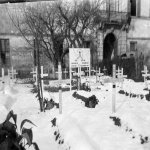I wonder how long it took to clean up after WW2. There were cubic miles of steel, aluminum, mines, bombs, bodies, and debris to get arranged.
I know there are still addresses in Klaipeda (was Memel) Lithuania that haven't been rebuilt yet. Barring a massive real estate boom, they likely never will. But some substantial effort must have been put in to simply clearing the streets so cities could function...
One wonders how much of that was organized, and if so under what jusridiction, and how much of it was Papa telling the kids "bring me bricks, we're building a house".
Why do you think Germans POWs did not go home much before 1947 in the West and 1955 in the East. Also all German civilians had to report for clean up duties to receive Allied occupation ration coupons.


















































































